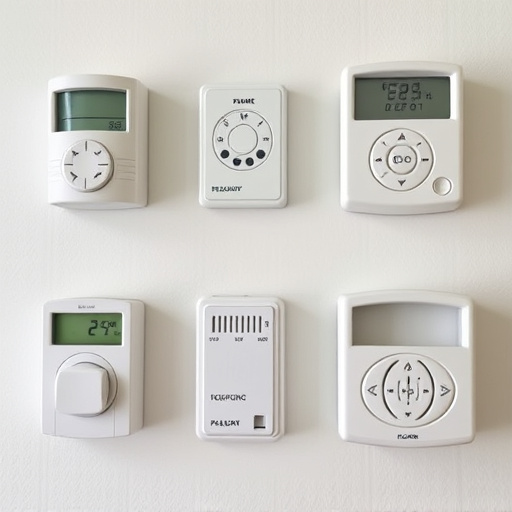Discrete wearable security alarm systems provide hands-free, portable protection with customizable settings. These devices emit a powerful Personal Alarm Sound within a defined Coverage Area to deter threats and alert assistance. Users can tailor intensity, duration, and frequency for different environments, ensuring effective protection while offering peace of mind in potentially risky situations. Regular testing is crucial to maintain the alarm's effectiveness based on environmental factors like noise and obstructions.
Discrete wearable security alarm systems offer unprecedented personal safety. This article delves into the intricacies of these innovative devices, exploring key components from sensors to activation mechanisms. We’ll discuss how to determine the optimal Personal Alarm Sound Coverage Area for maximum protection in various scenarios. From everyday carry to specialized needs, discover the benefits and learn how to choose the right discrete wearable alarm tailored to your requirements.
- Understanding Discrete Wearable Security Alarm Systems
- Key Components of a Personal Alarm System
- Determining Sound Coverage Area for Effective Protection
- Benefits and Use Cases of Wearable Alarms
- Choosing the Right Discrete Wearable Alarm for Your Needs
Understanding Discrete Wearable Security Alarm Systems
Discrete wearable security alarm systems are compact, personal devices designed to offer a unique level of protection in various scenarios. These innovative systems provide individuals with an easy-to-carry, hands-free solution for self-defense and emergency situations. Unlike traditional alarms that might be stationary or tied to specific locations, discrete wearables are portable, allowing users to stay alert and protected while on the move.
The primary function of these devices is to emit a powerful personal alarm sound within a defined coverage area. When activated, the alarm can deter potential threats and draw attention to the wearer’s location, providing crucial time for help to arrive. With adjustable settings and customizable features, users can tailor the alarm’s intensity, duration, and frequency to suit different environments and personal preferences, ensuring effective protection in various situations.
Key Components of a Personal Alarm System
Personal alarm systems are designed to provide individuals with a sense of security and peace of mind, especially in potentially risky situations. The key components of such a system include a portable device (often worn as a pendant or bracelet), an activated alarm sound, and a defined coverage area.
The portable device is typically equipped with a button that, when pressed, triggers the alarm. These devices often have a loud, attention-grabbing Personal Alarm Sound to alert nearby people in case of distress. The Coverage Area can vary depending on the system; some offer local protection within a few meters, while others provide wider range coverage suitable for outdoor activities or travel. This flexibility ensures users are prepared for various scenarios, making personal alarm systems a valuable asset for safety and emergency situations.
Determining Sound Coverage Area for Effective Protection
When considering a discrete wearable security alarm system, understanding the Personal Alarm Sound Coverage Area is paramount for effective protection. This area refers to the range at which the alarm’s sound can be heard and effectively deter potential threats. Factors like environment noise levels, distance, and obstructions play crucial roles in determining this coverage. For instance, an open field will carry sound differently than a dense urban environment with tall buildings and bustling traffic.
To ensure optimal protection, users should select a system with a sound coverage area that aligns with their typical activities and surroundings. In residential settings, this might mean considering the distance between the wearer and nearby walls or windows. For those in urban areas, where ambient noise is higher, a more powerful alarm with an extended range may be necessary. Regular testing of the alarm’s volume and projection can also help ensure its effectiveness over time.
Benefits and Use Cases of Wearable Alarms
Wearable security alarm systems offer a unique and discreet approach to personal safety, providing individuals with an innovative way to protect themselves in various situations. One of the primary benefits is their portability; these devices can be worn as accessories, ensuring easy accessibility at all times. Whether it’s a personal emergency or a need for quick alert during outdoor activities, wearable alarms provide immediate notification within a specified coverage area.
Use cases range from everyday self-protection to specialized scenarios. For example, hikers and adventurers can benefit from the remote activation feature, signaling for help in case of an accident or getting lost. Additionally, these devices are ideal for individuals working alone in isolated areas, providing peace of mind by allowing them to quickly alert others in emergency situations. The personal alarm sound is designed to be loud and attention-grabbing, ensuring that help can arrive swiftly.
Choosing the Right Discrete Wearable Alarm for Your Needs
When selecting a discrete wearable security alarm, understanding your specific needs is paramount. Consider the personal alarm sound as a top priority; it should be loud and distinct to attract attention in an emergency. The coverage area of the alarm’s range also matters; whether you’re outdoors or indoors, ensure the device can trigger assistance within a suitable radius.
Additionally, think about the type of situations you’ll need protection for. Are you looking for a discreet daily carry option with longer battery life? Or do you require a more robust design suited for extreme conditions and regular use? Matching your chosen alarm to these considerations will guarantee it effectively meets your safety requirements.
Discrete wearable security alarm systems offer a powerful personal safety net, combining portability with protection. By understanding key components like sound coverage area and choosing the right device for your needs, you can harness the benefits of these innovative devices, ensuring peace of mind whether you’re outdoors or on the go. In today’s world, where personal safety is paramount, wearable alarms provide a convenient and effective solution.
